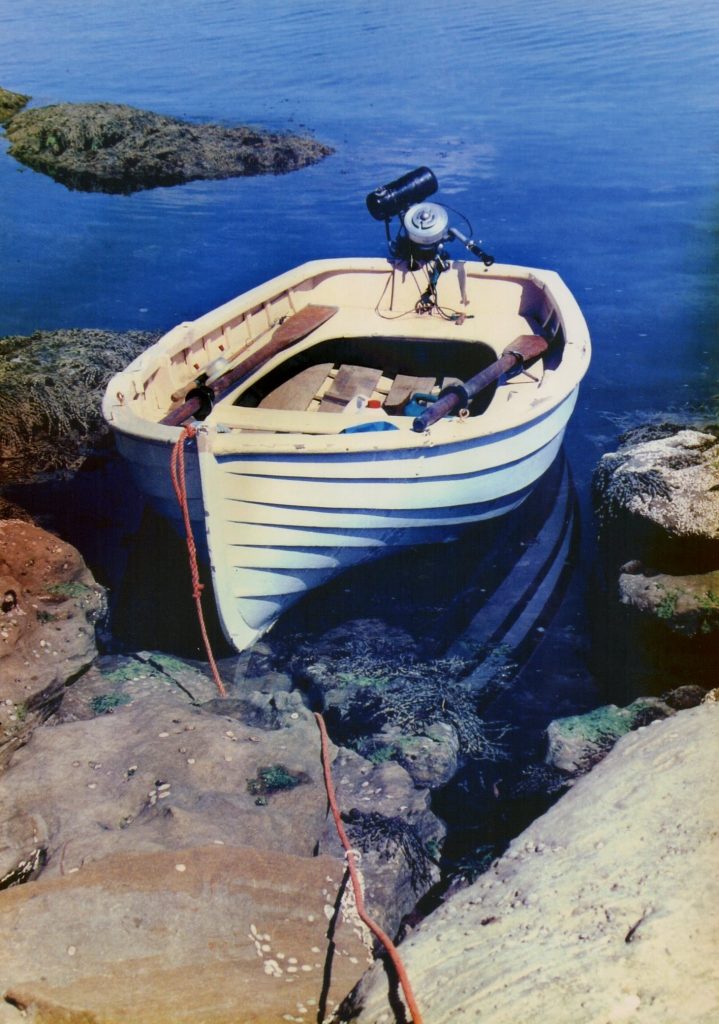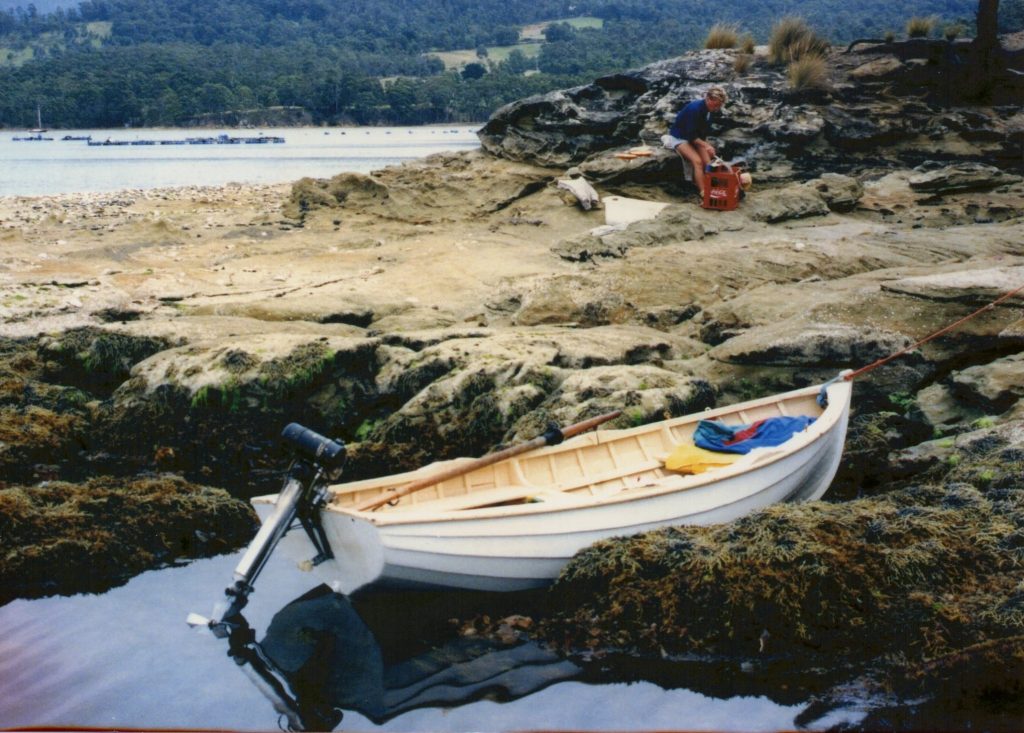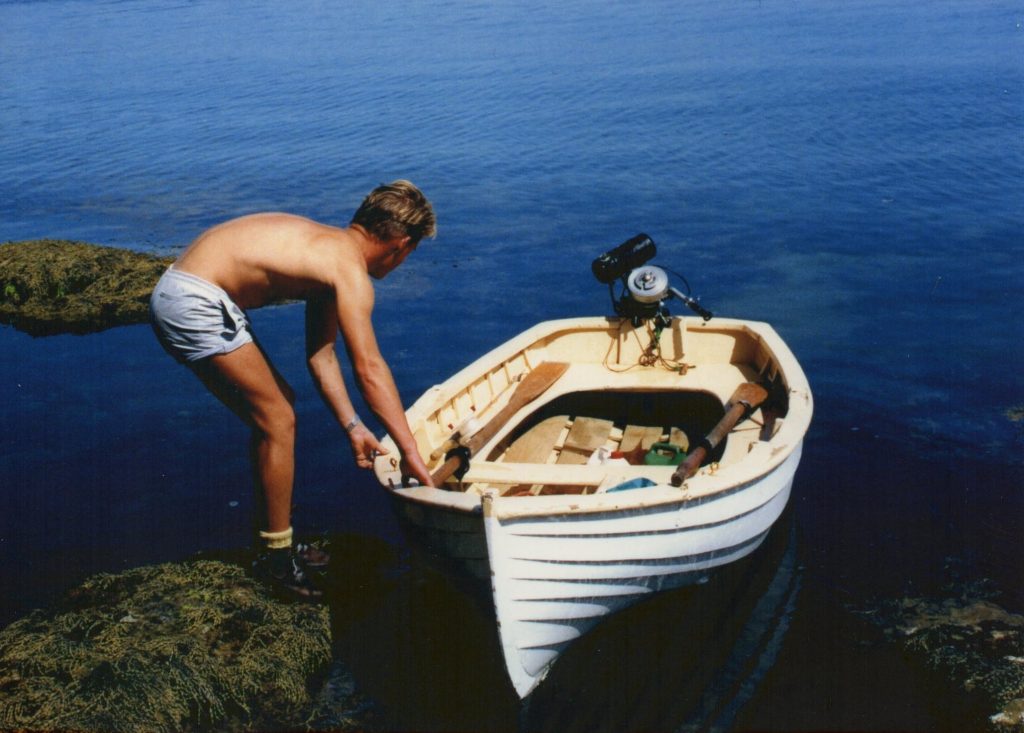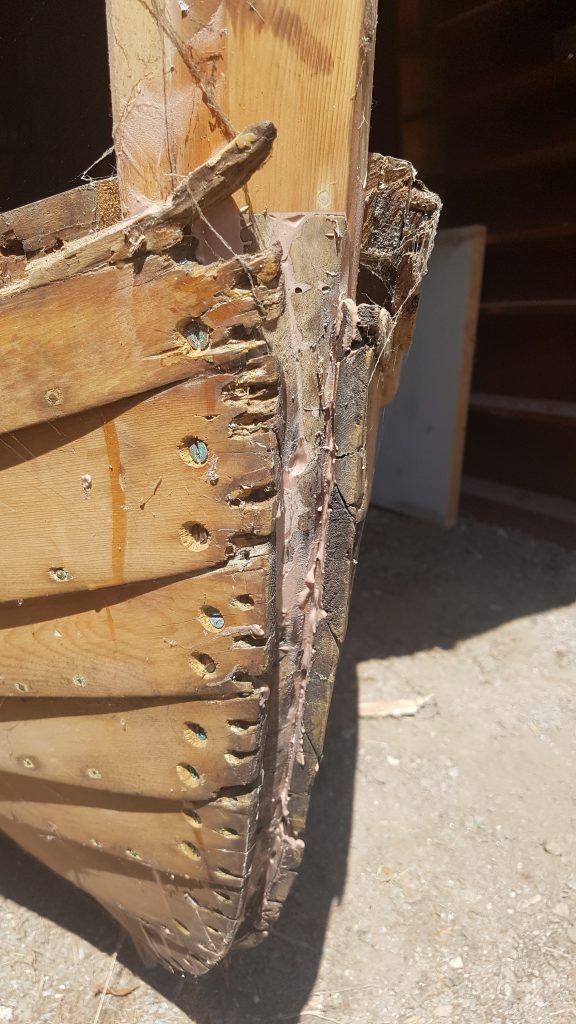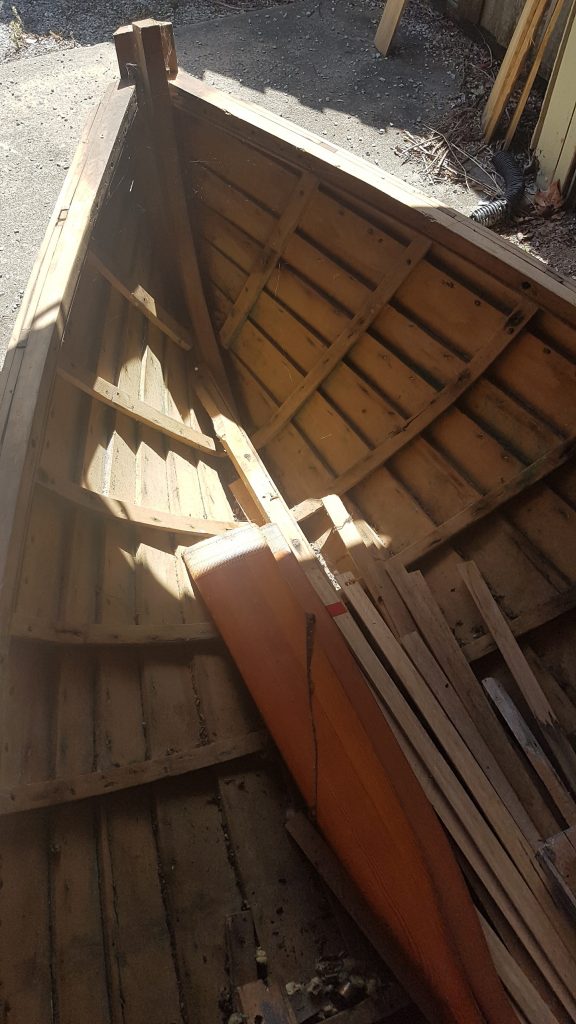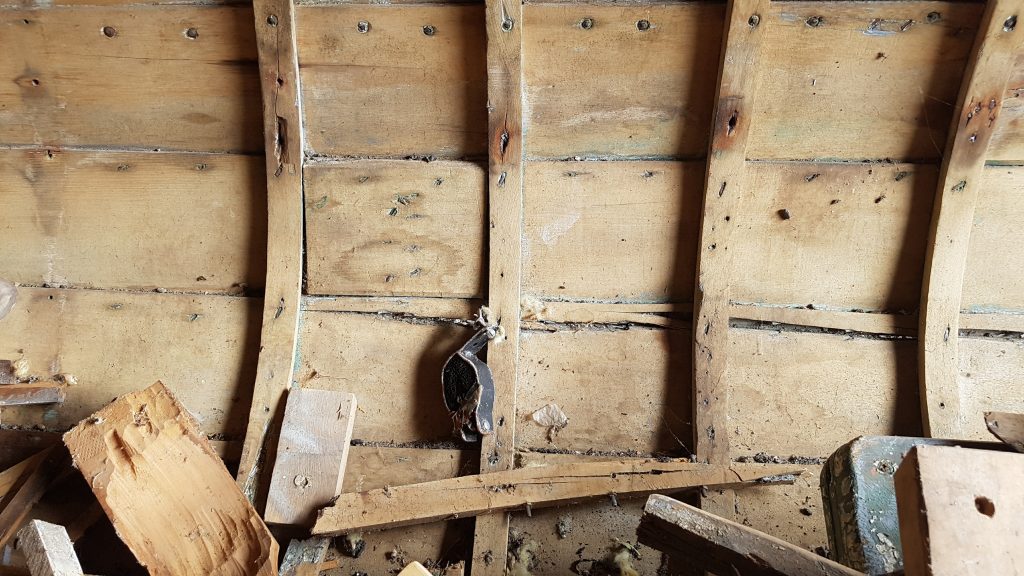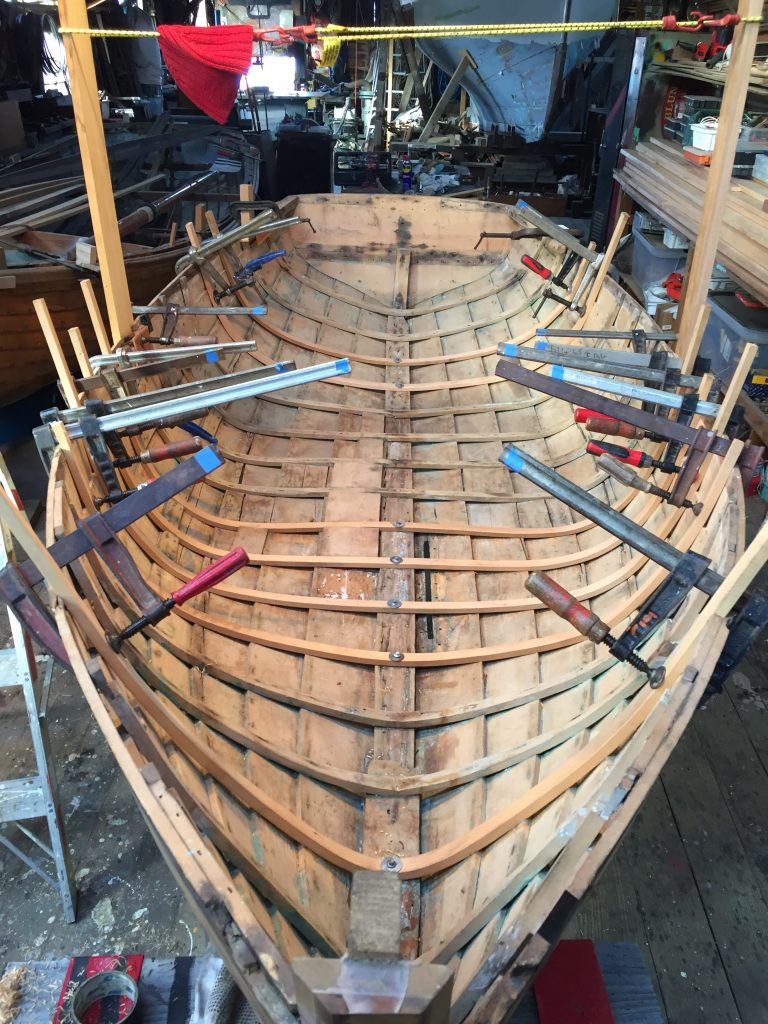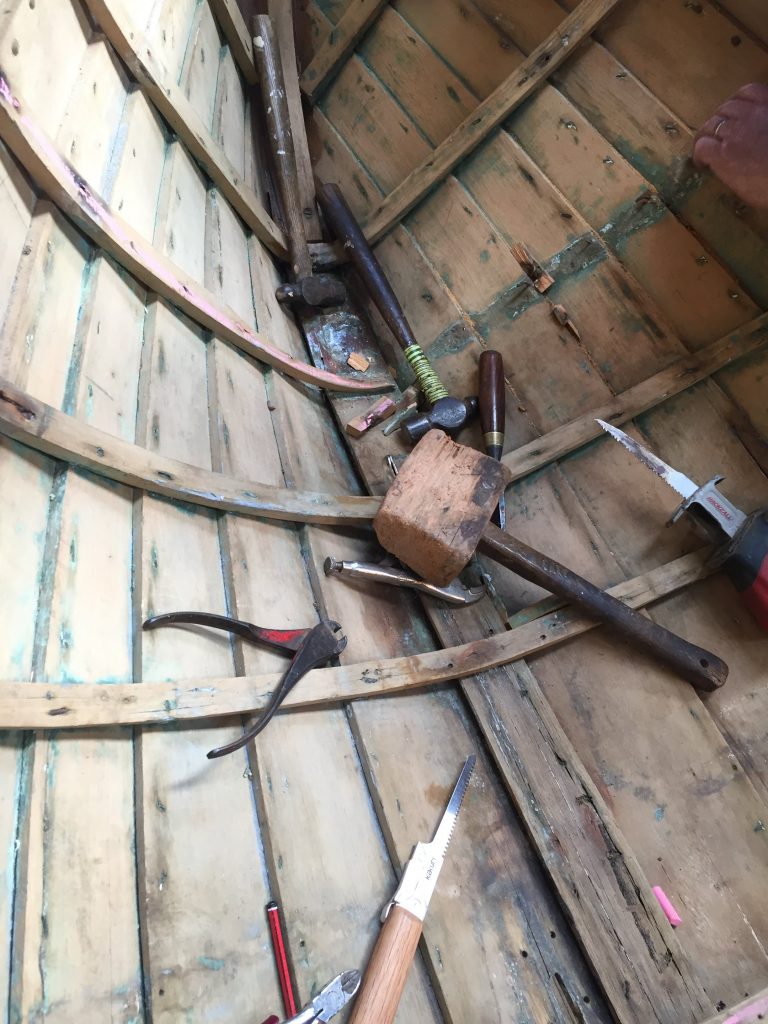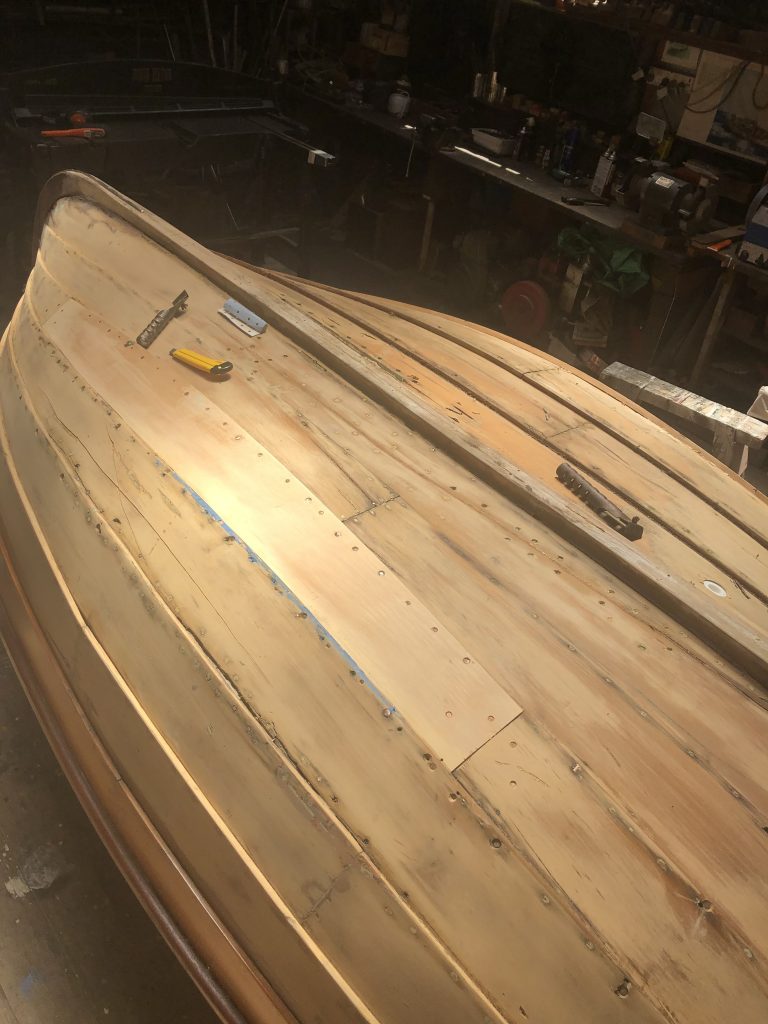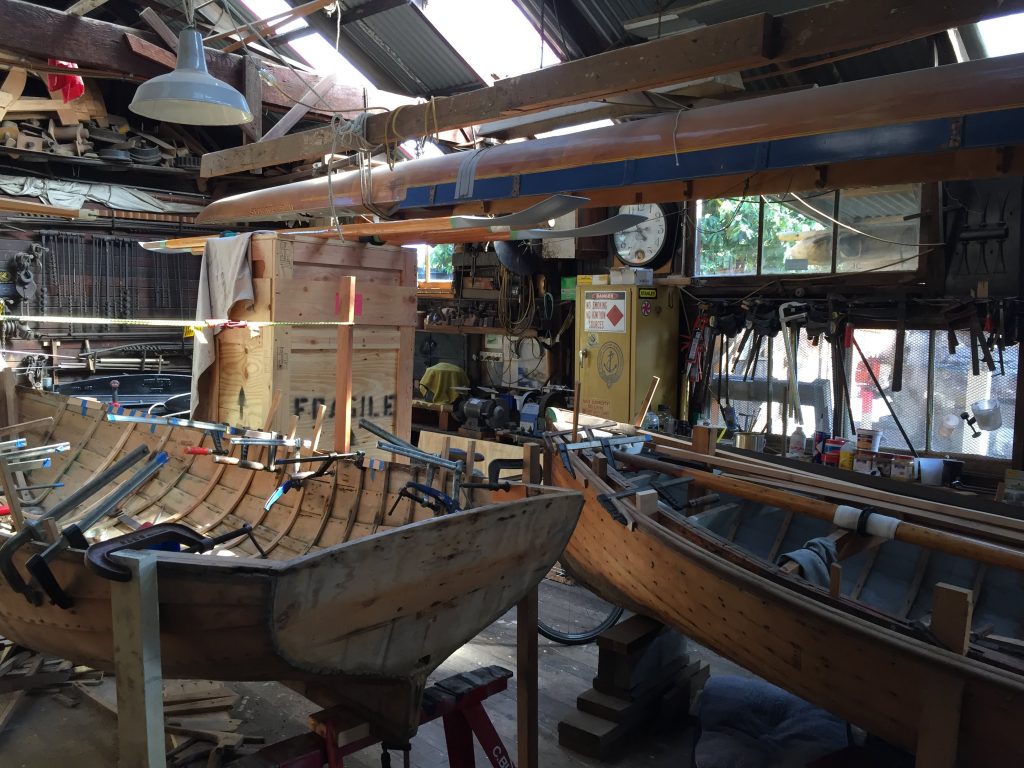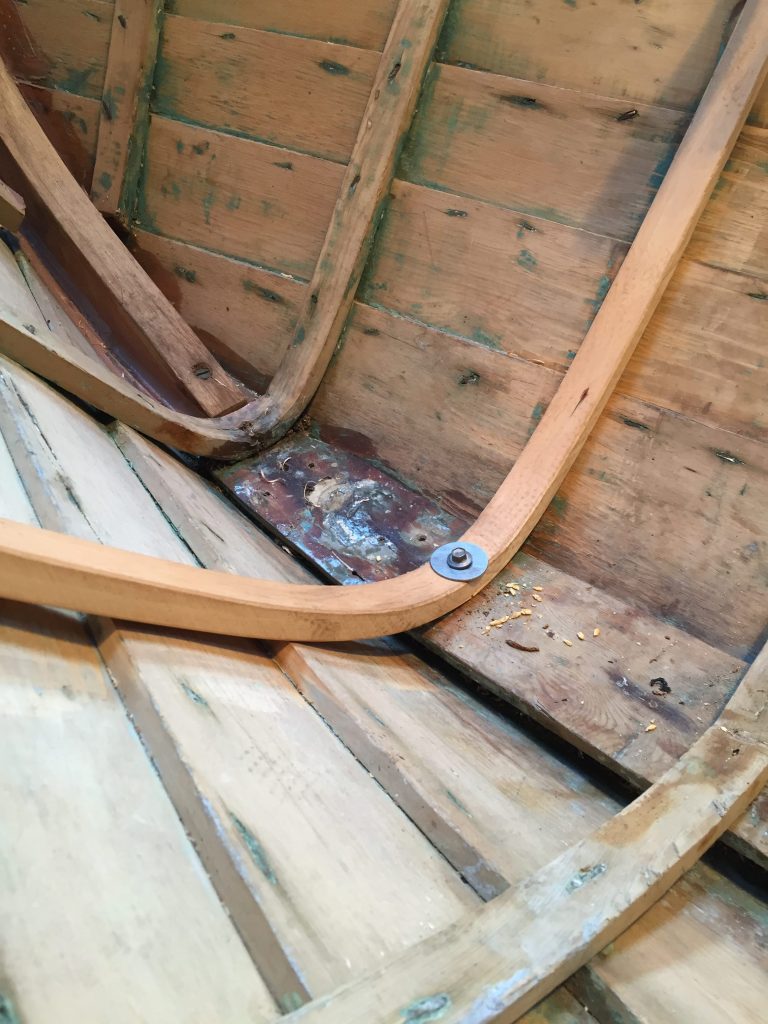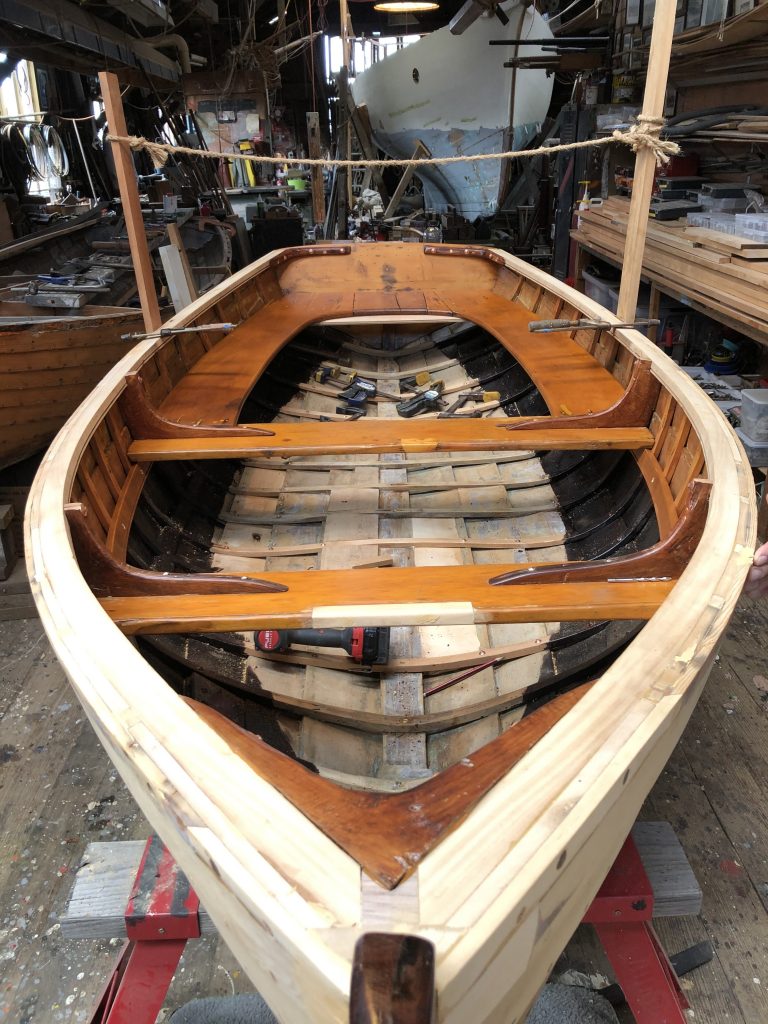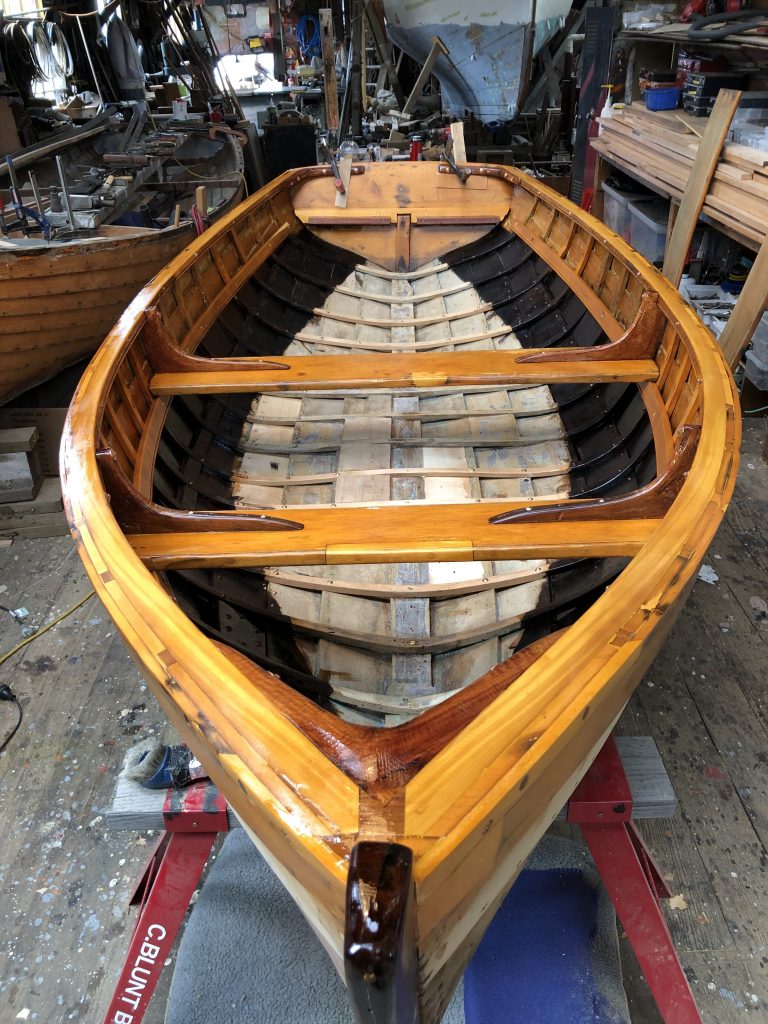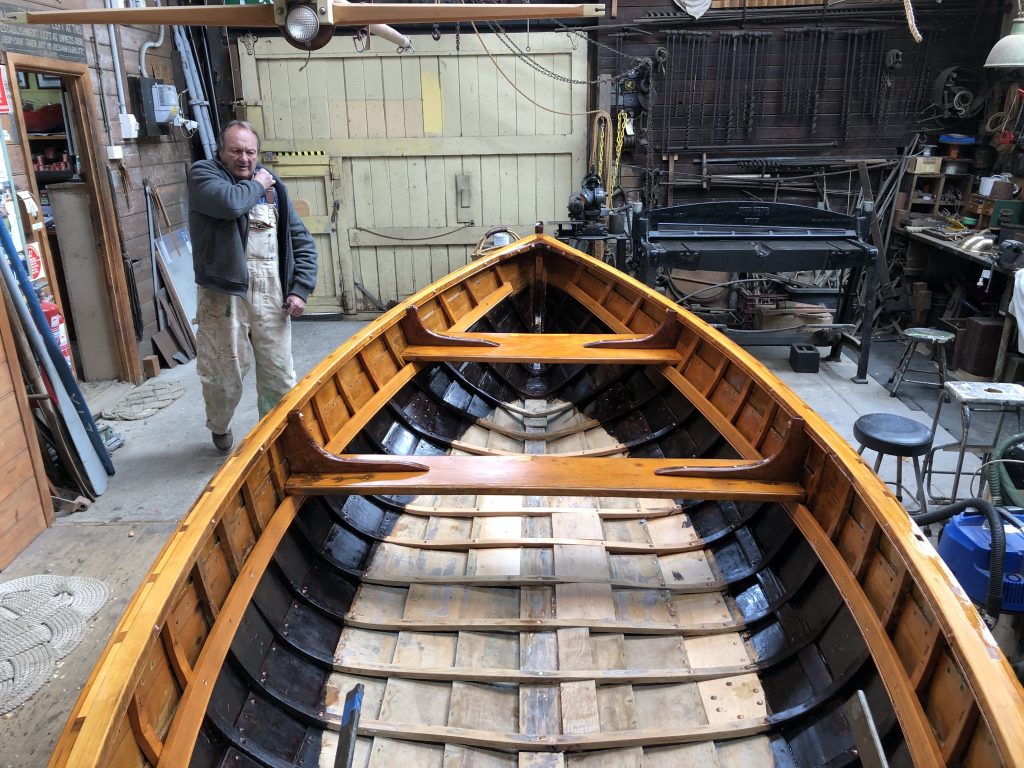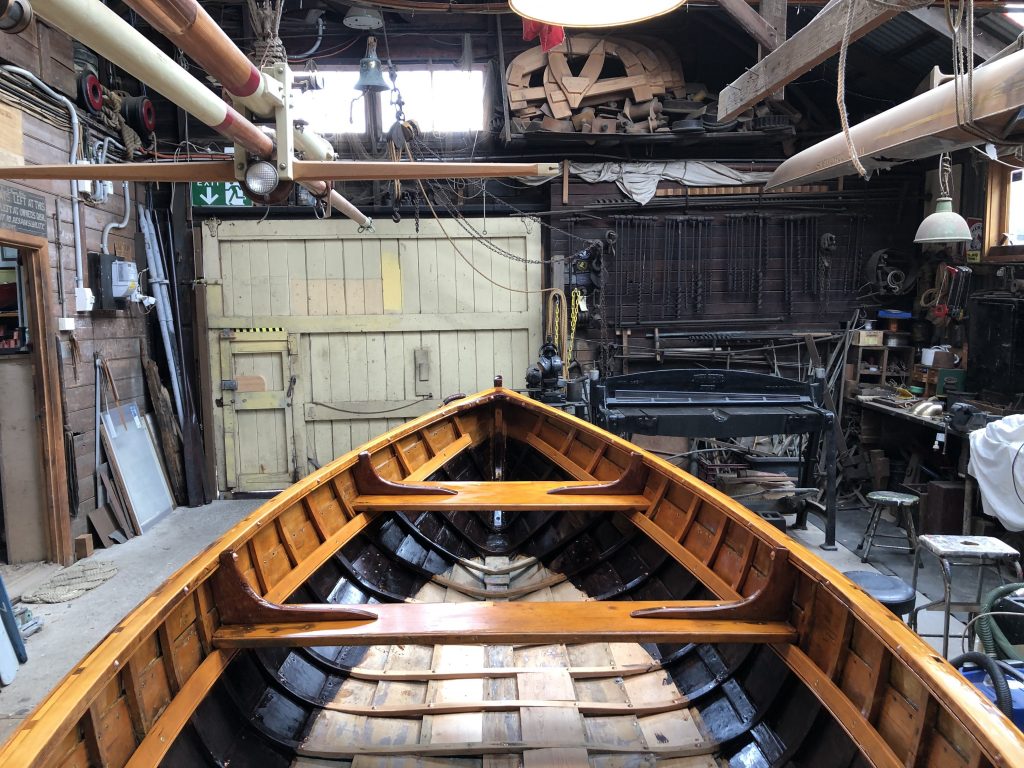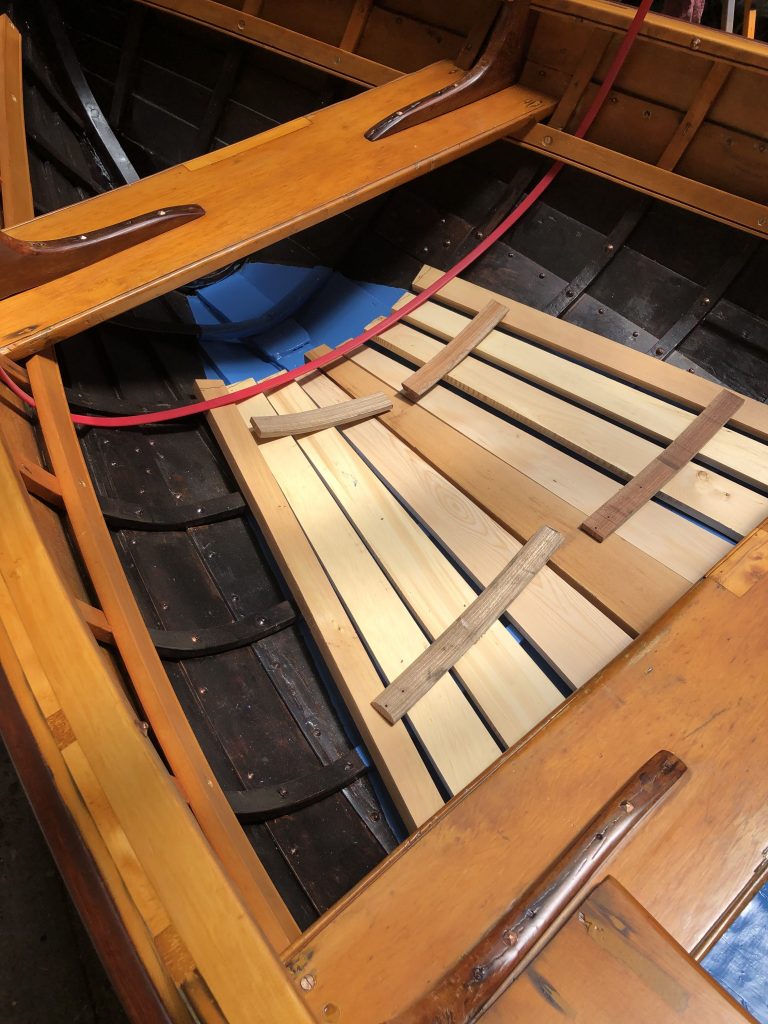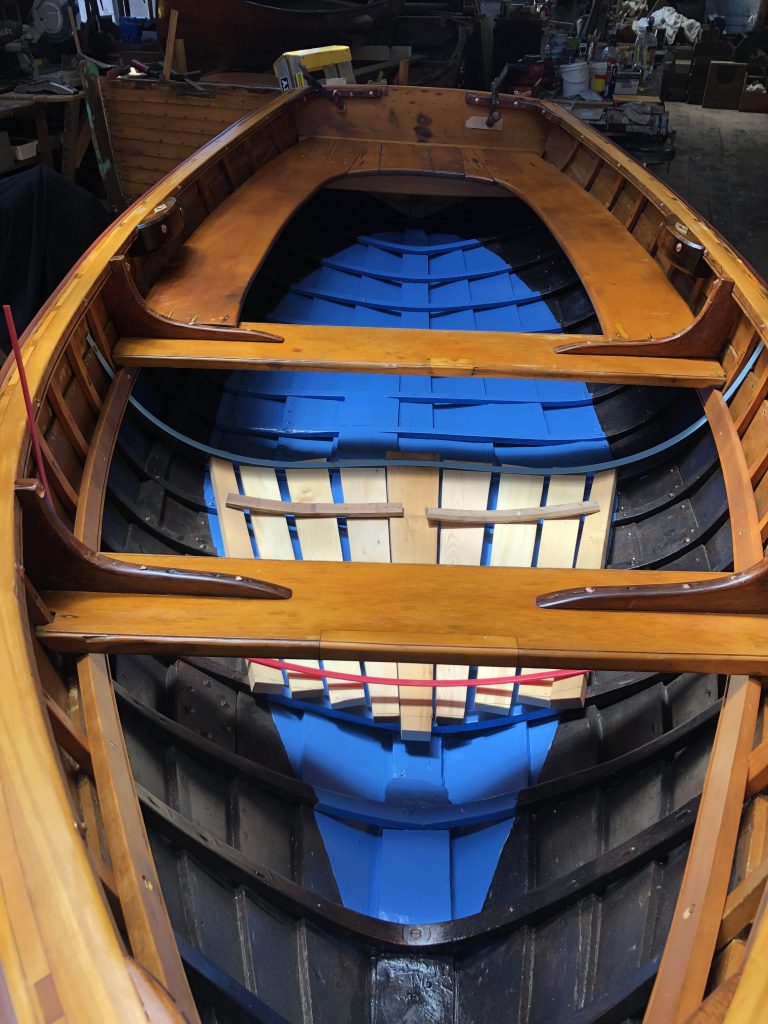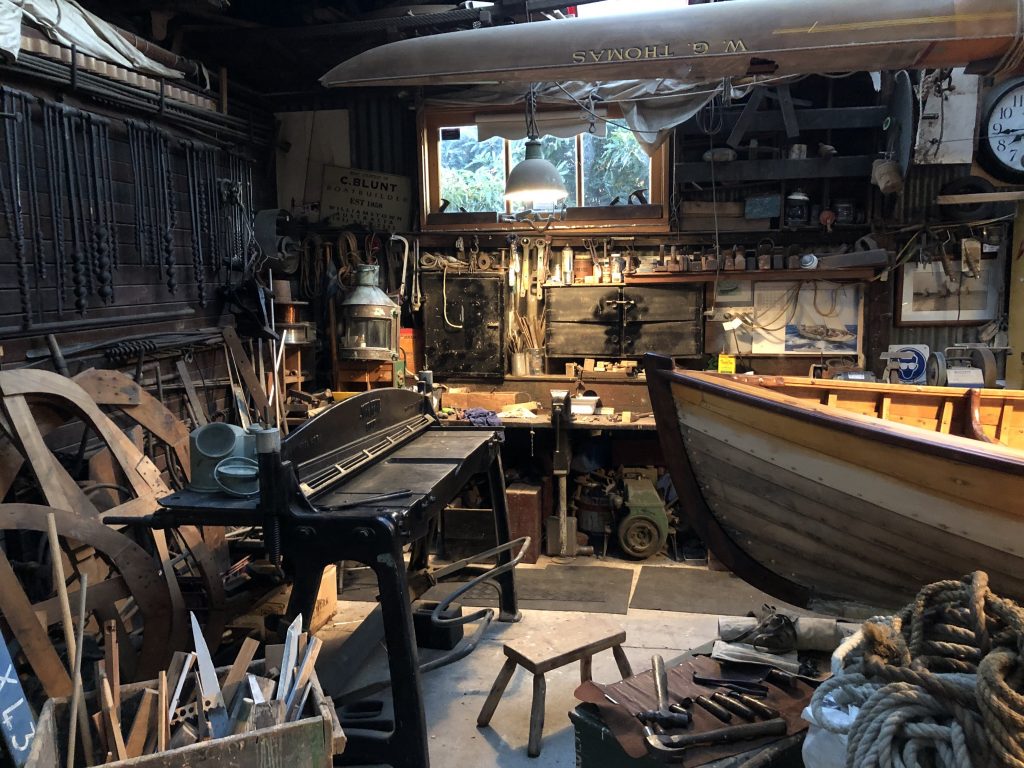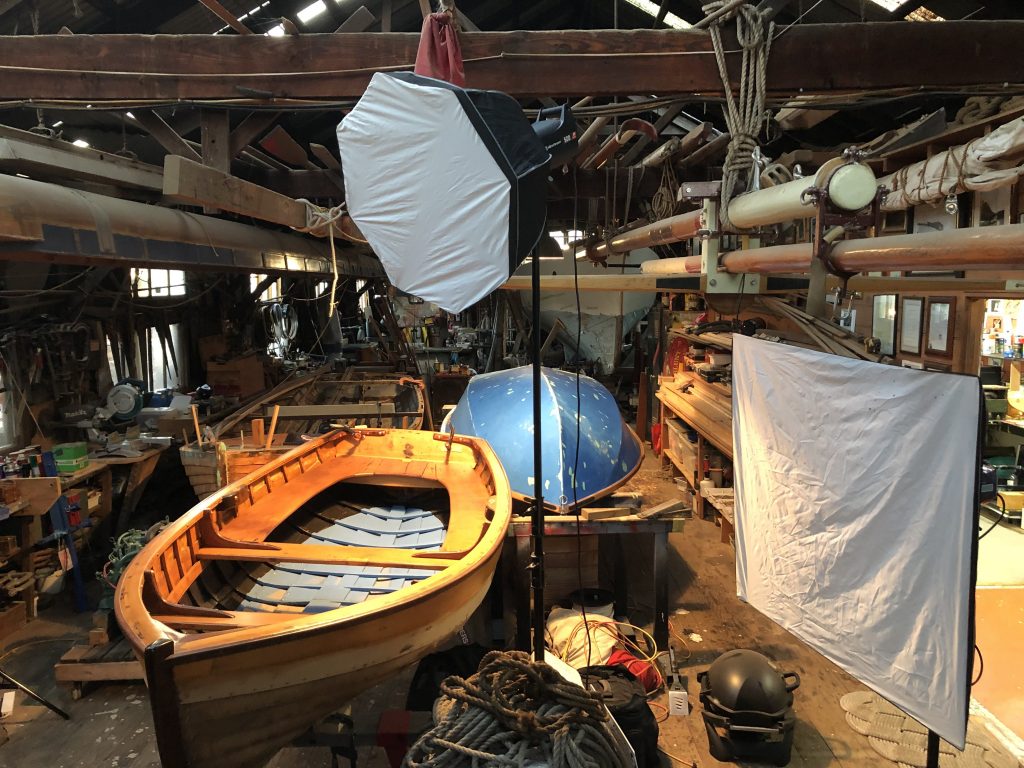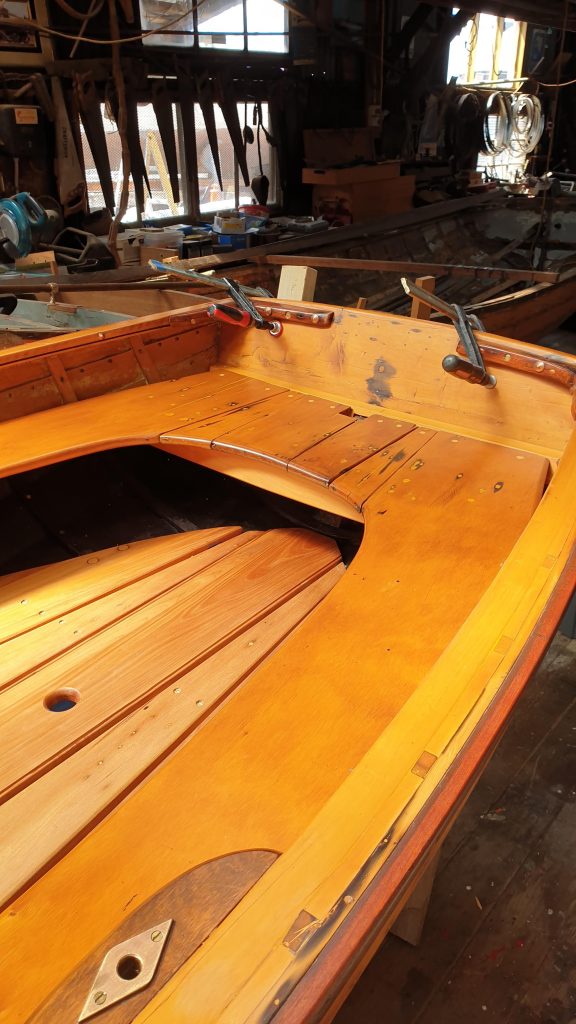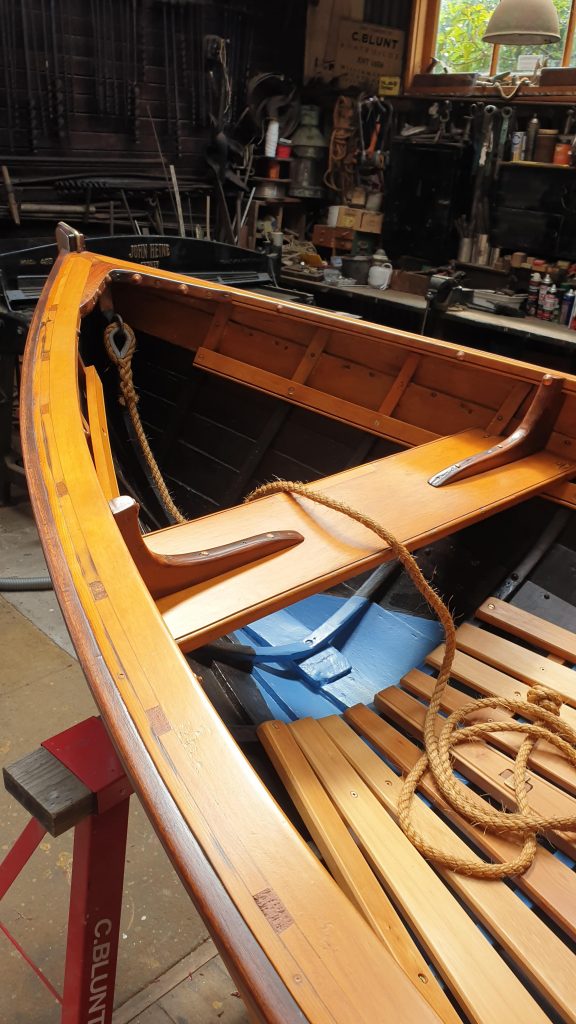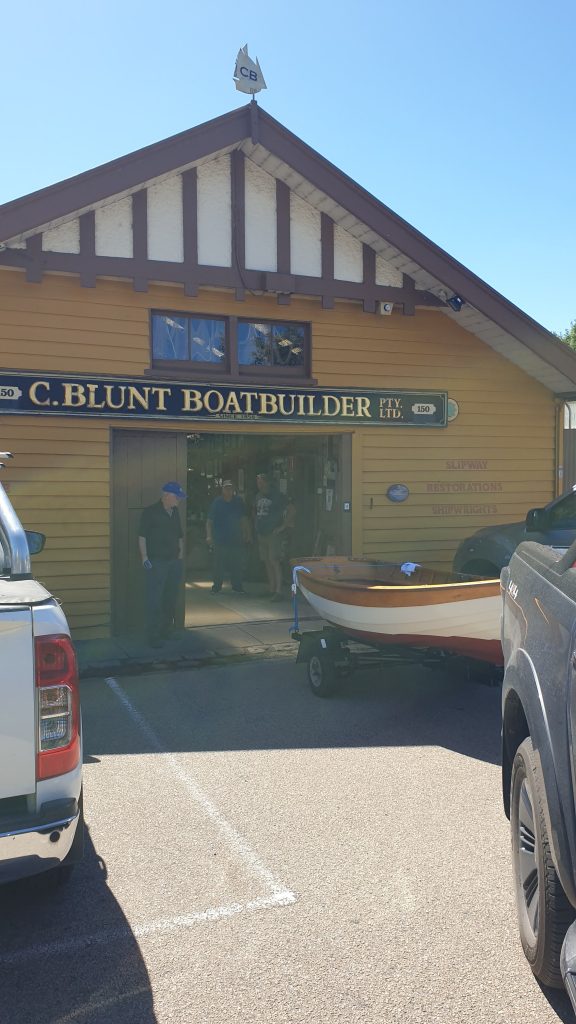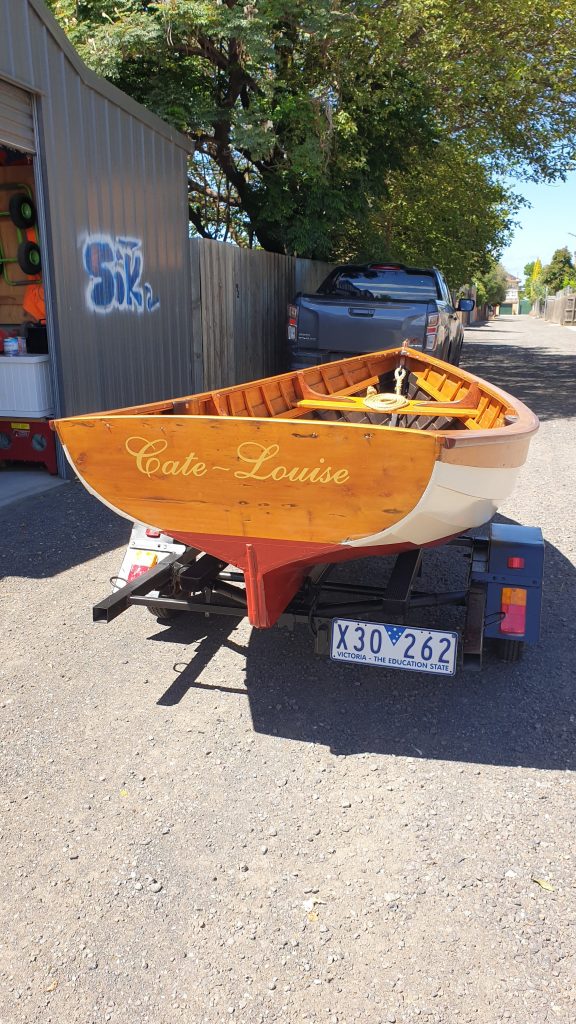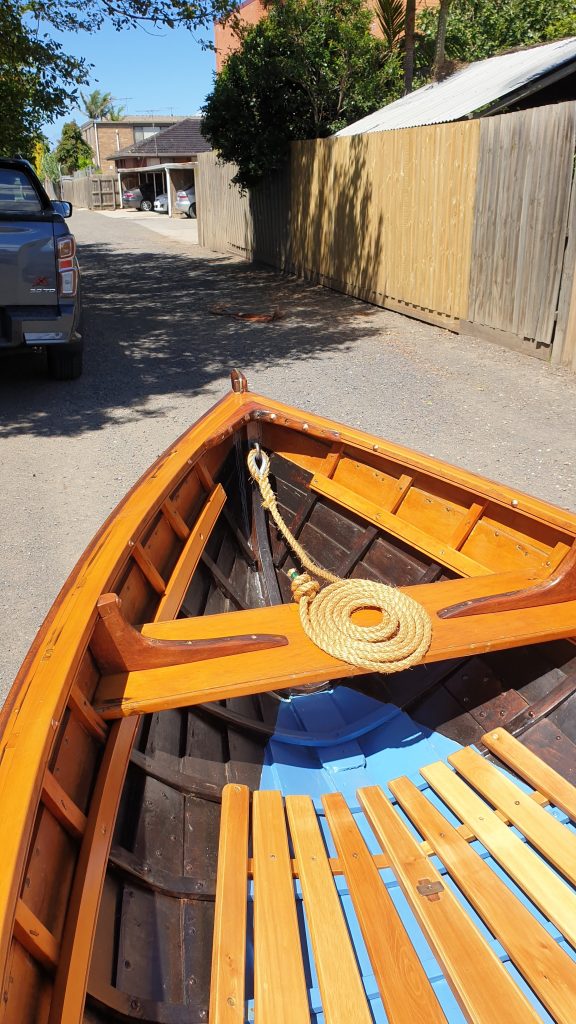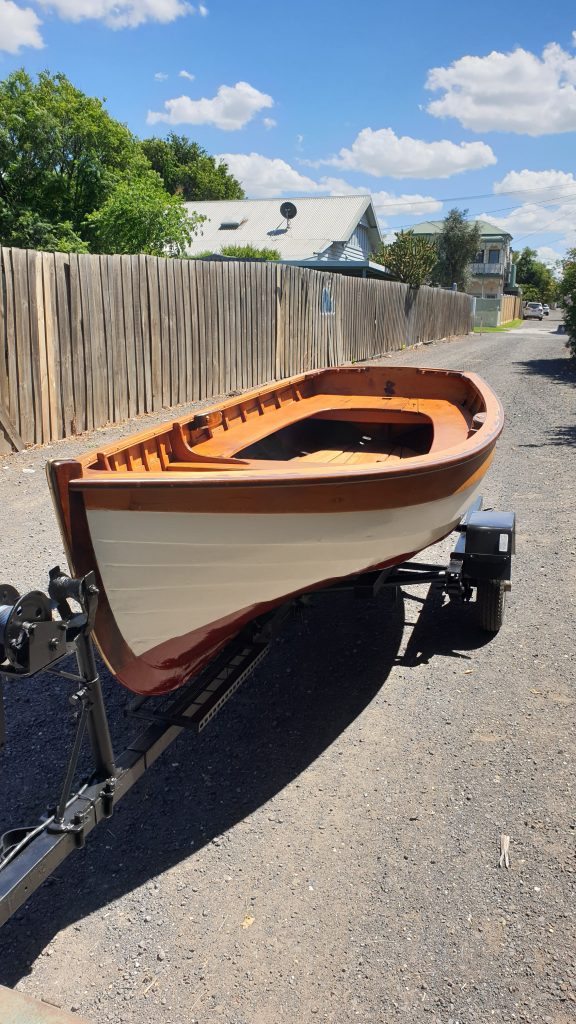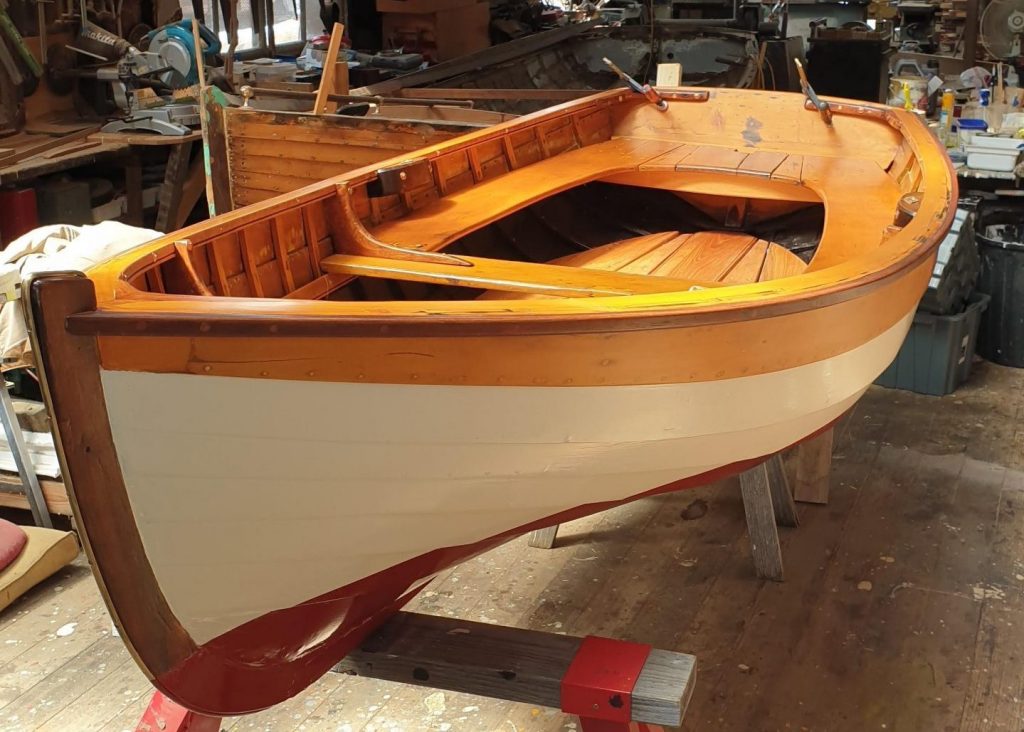
An historic boat from Tasmania
Cate-Louise is a fine example of a traditional Huon pine rowing boat made in Hobart’s historic Battery Point precinct around Napoleon St. A typical ‘general purpose’ boat, she was made for carrying people and goods like countless others of her type that were built along Battery Point’s waterfront. Although many were made, few survive but thanks to some good luck along the way, Cate-Louise with her story lives on.
The ‘Little Boat’ as she is otherwise known, has been in our family for the past thirty years. Her previous owner was a young Adam Morgan of Coningham (south of Hobart). He had inherited the boat from his great uncle, John Roberts, who acquired the boat from his brother in-law, Arthur Morgan, in 1964. For John Roberts, the boat came as a chattel with the holiday shack he purchased from Arthur Morgan. The shack stood on four acres of waterfront land at Howden on Hobart’s Eastern Shore.
Arthur had also acquired the boat as a chattel when he bought the Howden property from Cyril Taylor in 1958. Cyril had been granted the vacant land under the Returned Soldier’s Settlement Act in 1928. When selling the land, by then with a house (shack) to Arthur, Cyril drew attention to the little boat which came with the property. He wanted Arthur to know the boat was special and had been made in the yard of Albert ‘Tucker’ Abel, Napoleon Street Battery Point. And so, by word of mouth from owner to owner, the story of the little boat’s origin has been preserved.
Tucker Abel was a prominent Hobart boatbuilder whose business operated between 1898 and 1937. During that time the yard turned out more than sixty-five vessels ranging from small dinghies to substantial motor launches. In her 2017 book, Industrious, Innovative Altruistic: The 20th Century Boat Builders of Battery Point, Nicole Mays has published a detailed account of Tucker’s life and work, among many others.
Decay and Restoration
As is the way with all wooden boats, time and the elements take their toll and without regular maintenance the damage inflicted can overwhelm these fragile craft. Cate-Louise had accumulated her share of decay, though fortunately, she had spent long stretches of her life in various sheds. The most recent spell lasting over twenty years. Although preliminary restoration works began in the 1990’s with disassembly and paint stripping, it wasn’t until late in 2019 that serious restoration work began.
The skills required to build or repair traditional wooden boats are rare these days but in Williamstown, Victoria, there is still a remaining boatyard well equipped and capable of undertaking such specialised restorations. Greg Blunt is the fifth generation of the Blunt family to operate C. Blunt Boat Builders in Nelson Place, Williamstown, a renowned wooden boat centre. Over two years, on and off, Greg personally worked on or oversaw the little boat’s restoration.
The work involved included:
Strip down, removal of decayed timbers.
Replacing damaged or missing ribs (steam bent Huon Pine).
Repairs to the hardwood keel.
Restoration of the stem piece (broken in half).
Replacement of damaged planking.
Replacement of thwart risers.
Repairs to gunnels and belting.
Reassembly of thwarts and seats with original hardwood knees.
Installation of floor decking (New Zealand Kauri)
Painting and varnishing.
Dimensions and Details
- LOA 11’, 2”
- Beam 4′, 8″
- Planking Huon Pine
- Transom Huon Pine
- Seating / Thwarts Huon Pine
- Floor decking New Zealand Kauri
- Knees, Keel, Stem Tasmanian native hardwood
- Fasteners Traditional Copper Nails, Roved or Clenched
